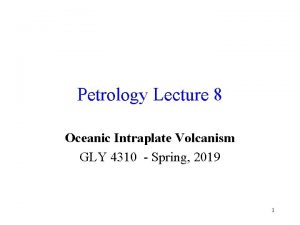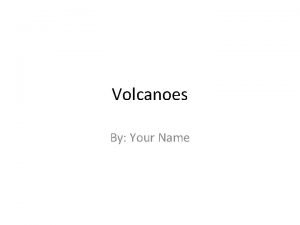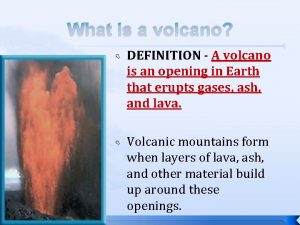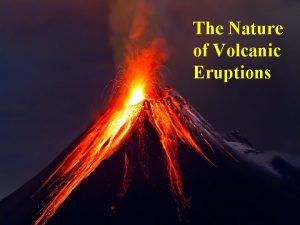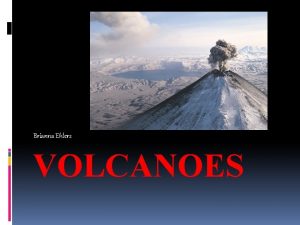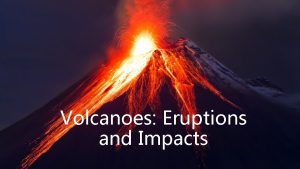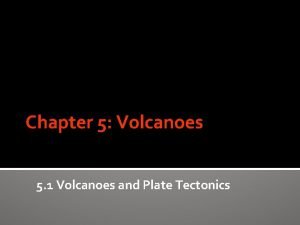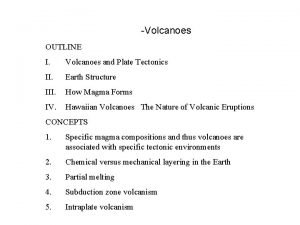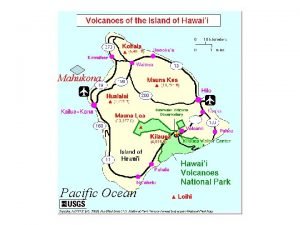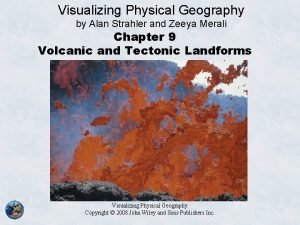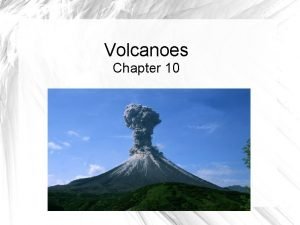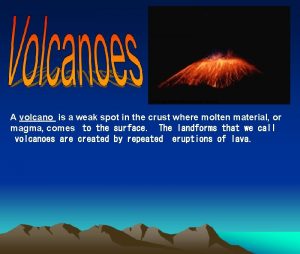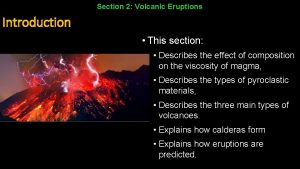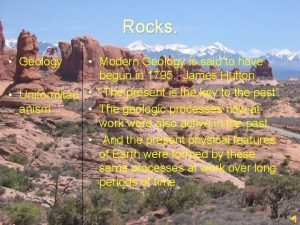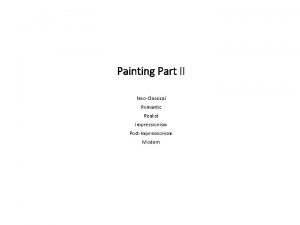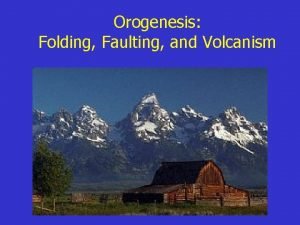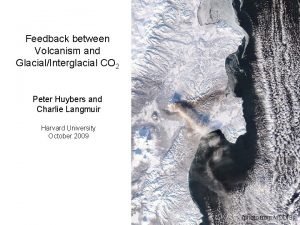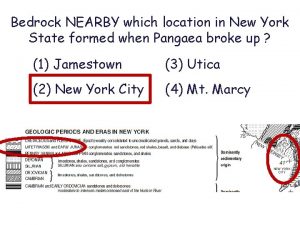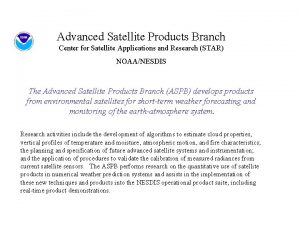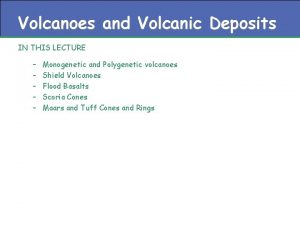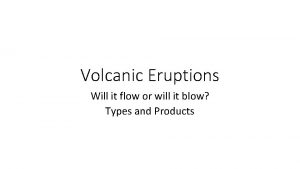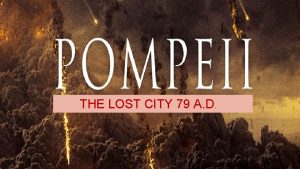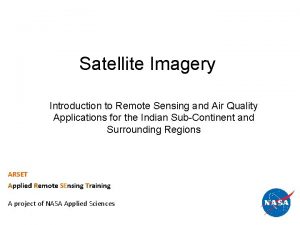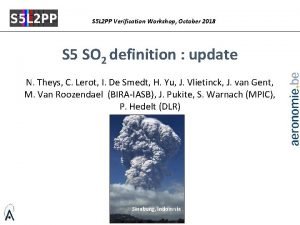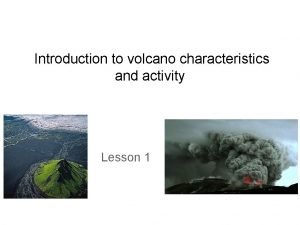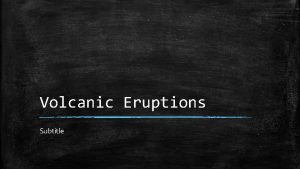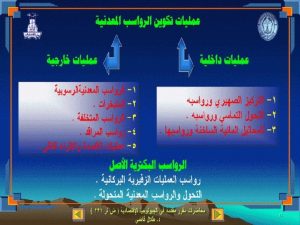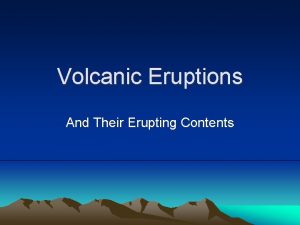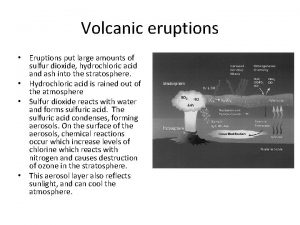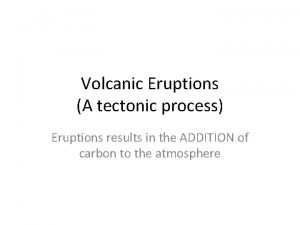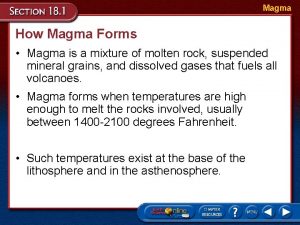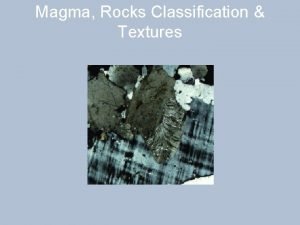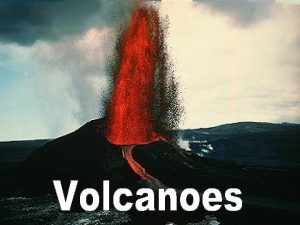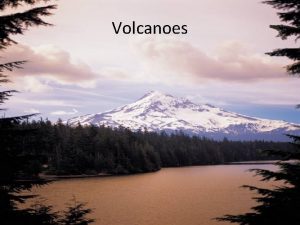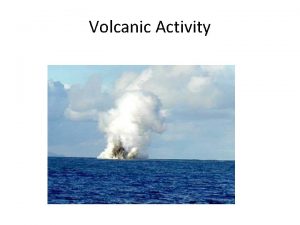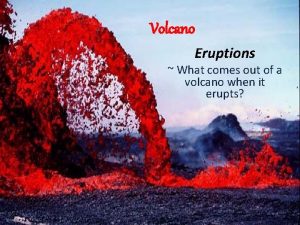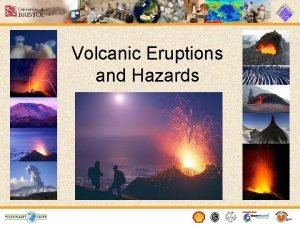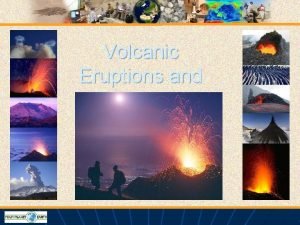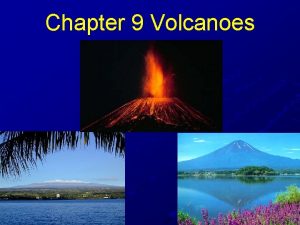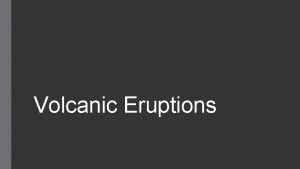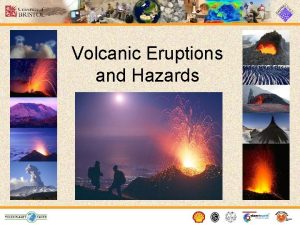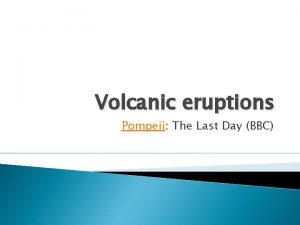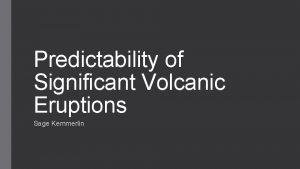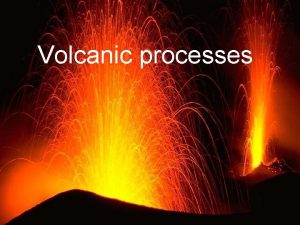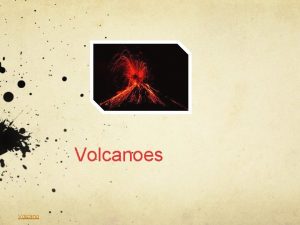Common types of magma eruptions Shield volcano Volcanic






























- Slides: 30

Common types of magma eruptions Shield volcano Volcanic dome Cinder cones Composite volcano Caldera Fissure Flood basalt

Mount St. Helens in Washington is a composite volcano On March 16, 1980 the first of a series of minor earthquakes occurred under the volcano This marked the beginning of a new eruption cycle It had been ~350 years since the last eruption

Mount St. Helens On May 18, 1980, at 8: 32 am, a magnitude 5. 1 earthquake occurred 1 mile directly under the volcano 10 seconds later, the north side of the volcano began to collapse followed immediately by an explosion that blew the top 400 meters (1300 feet) off of the peak (a volume of 1. 3 cubic kilometers)

Mount St. Helens “. . . 24 square miles of valley was filled by a debris avalanche, 250 square miles of recreation, timber, and private lands were damaged by a lateral blast, and an estimated 200 million cubic yards of material was deposited directly by lahars (volcanic mudflows) into the river channels” “Fifty-seven people were killed”

Mount St. Helens Ash Fall

Mount St. Helens is now a volcanic national monument and remains active

Volcanic Hazards

How Bad Can It Be? 1815 1822 1826 1883 1902 1919 1951 1982 1985 Indonesia Martinique Guatemala Indonesia New Guinea Mexico Columbia 92, 000 killed 5, 500 killed 3, 000 killed 36, 417 killed 29, 025 killed 6, 000 killed 5, 110 killed 2, 942 killed 1, 700 killed 23, 000 killed

How Bad Can It Be? Causes of volcanicrelated deaths Over the last 2, 000 years

Volcanic Bomb

Gases Volcanoes can also eject great quantities of gases and steam which can be mixed with the pyroclasts Sulfur dioxide (SO 2) Hydrogen sulfide (H 2 S) Carbon dioxide (CO 2) Hydrogen Chloride (HCl) Hydrogen Fluoride (HF)

Lava Flows Lava erupts from the flank of the Barcena Volcano on the Revillagigedo Islands, Mexico in the Pacific Ocean causing little damage

Lava Flows Lava set fire to the brand new Waha`ula Visitor Center in Hawai`i Volcanoes National Park when an 1989 eruption of Pu‘u ‘O‘o–Kupaianaha completely covered the area with thin pahoehoe lava flows

Lava Flows of Parícutin The Parícutin eruption began as a fissure in a cornfield owned by farmer Dionisio Pulido on February 20, 1943 in the Mexican state of Michoacán Pulido, his wife and son, all witnessed the initial eruption of ash and stones first-hand as they plowed the field

1902 Martinique is an island formed by volcanoes in the Caribbean It was a French colony The dormant Mount Pelée volcano began a new series of eruptions on April 25, 1902

1902 Martinique With each passing day, the eruptions became worse The French governor refused to evacuate the city of St. Pierre and surrounding smaller cities at the base of the volcano On Wednesday, May 7, 1902, the governor with his family and entourage visited St. Pierre There was a gala ball that night

1902 Martinique The next day at 8: 02 am, the city of St. Pierre was destroyed by a pyroclastic flow that roared down the slopes of Mount Pelée at of 670 kilometers per hour (415 miles per hour)

1902 Martinique Over 29, 000 people are burned alive in seconds The entire town was completely destroyed

2007 Martinique Today, Martinique is an overseas department of France and St. Pierre is a quaint tourist attraction Mount Pele

Santorini is a circular group of islands in the Aegean Sea and is part of Greece The central lagoon is a volcanic caldera 12 by 7 kilometers (8 by 4 miles) in size

Santorini About 3500 years ago there was a tremendous volcanic eruption 30 cubic kilometers of the island was blown as high as 36 kilometers into the atmosphere This is believed to be the largest volcanic explosion in recorded human history

Atlantis? The eruption, ash fall and tsunamis are believed to have destroyed the Minoan civilization at the height of its wealth and power This may be the source of Plato’s story of Atlantis

Santorini Akrotiri is an ancient city on Santorini that was buried under hundreds of feet of volcanic ash from this tremendous explosion It is an active archaeology dig that is open to the public

1950 Santorini The volcano is still active and erupted in 1950

2009 Santorini Today, Santorini is a major tourist attraction

Mount Tambora (or Tomboro) is an active stratovolcano on Sumbawa island, Indonesia It was thought to be 14, 000 feet (4, 300 meters) high when it blew up in April 1815 The death toll was at least 71, 000 people (some estimate 92, 000 people were killed), of which 11, 000 to 12, 000 were killed directly by the eruption

Mount Tambora The explosion was heard on Sumatra island 2, 000 kilometers (1, 200 miles) away The red areas outlines the heavy ash fall

Mount Tambora The eruption ejected immense amounts of volcanic dust into the upper atmosphere and created global climate anomalies in the Northern hemisphere The entire world experienced dusty skies and deep red sunsets (Dusty sunsets in Hong Kong from 1992 Mount Pinatubo eruption)

Year Without a Summer 1816 became known as the Year Without a Summer and the Poverty Year and Eighteen hundred and Froze to Death Agricultural crops failed and livestock died in much of the Northern Hemisphere, resulting in the worst famine of the 19 th century Europe, still recuperating from the Napoleonic Wars, suffered from food shortages

Year Without a Summer Food riots broke out in Britain and France and grain warehouses were looted The violence was worst in landlocked Switzerland, where famine caused the government to declare a national emergency Huge storms, abnormal rainfall with flooding of the major rivers of Europe (including the Rhine) are attributed to the event, as was the frost in August 1816
 Oni magma volcano tamer
Oni magma volcano tamer Taal volcano is an example of_______ volcano
Taal volcano is an example of_______ volcano Composite cone definition
Composite cone definition Shield volcano
Shield volcano Cylinder cone volcano
Cylinder cone volcano Tectonic plates bbc bitesize
Tectonic plates bbc bitesize Shield volcano
Shield volcano Shield volcano
Shield volcano Shield volcano
Shield volcano Shield volcano
Shield volcano Types of magma
Types of magma Types of volcanoes
Types of volcanoes Factors affecting volcanic eruption
Factors affecting volcanic eruption Primary volcanic hazards
Primary volcanic hazards Thin layers of volcanic ash act as excellent time markers
Thin layers of volcanic ash act as excellent time markers Volcanic ash
Volcanic ash Volcanic ash
Volcanic ash Volcanic or plutonic rock
Volcanic or plutonic rock Volcanic ash
Volcanic ash Define folding faulting and volcanic activity
Define folding faulting and volcanic activity Volcanic features
Volcanic features Thin layers of volcanic ash act as excellent time markers
Thin layers of volcanic ash act as excellent time markers Volcanic ash
Volcanic ash Volcanic ash
Volcanic ash Volcanic ash
Volcanic ash Volcanic ash
Volcanic ash Volcanic ash
Volcanic ash Volcanic ash
Volcanic ash Volcanic ash
Volcanic ash Volcanic explosivity index
Volcanic explosivity index Batholith
Batholith
